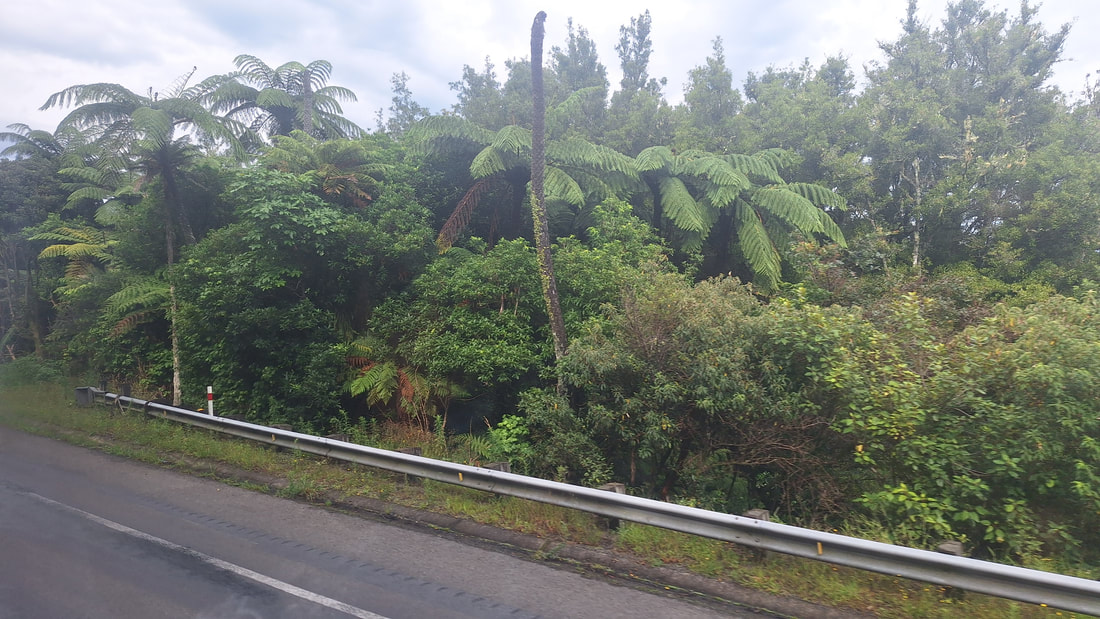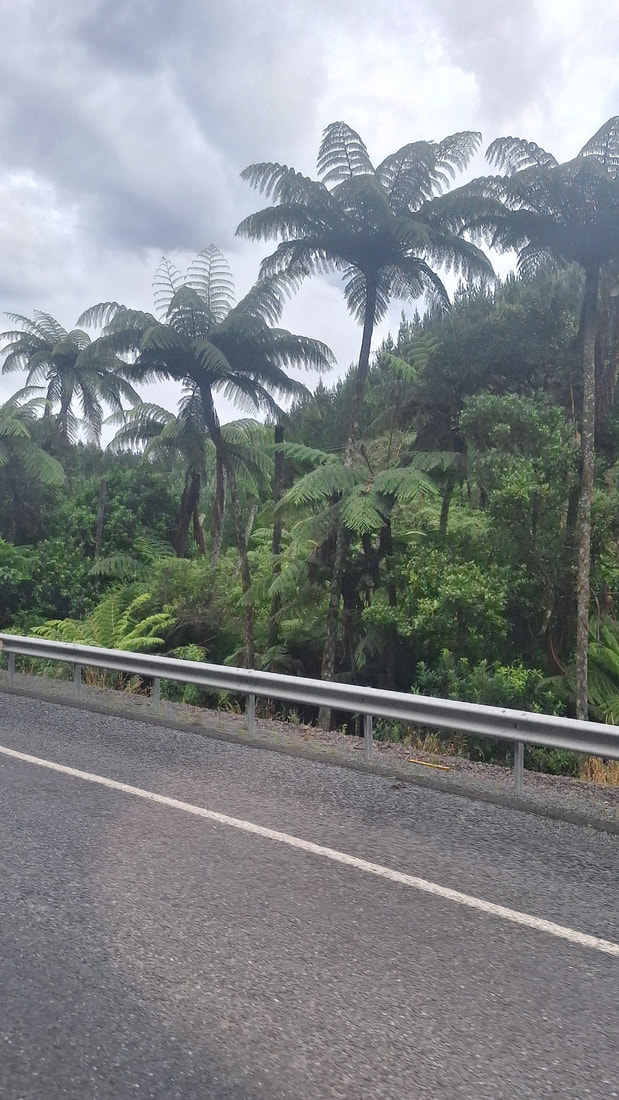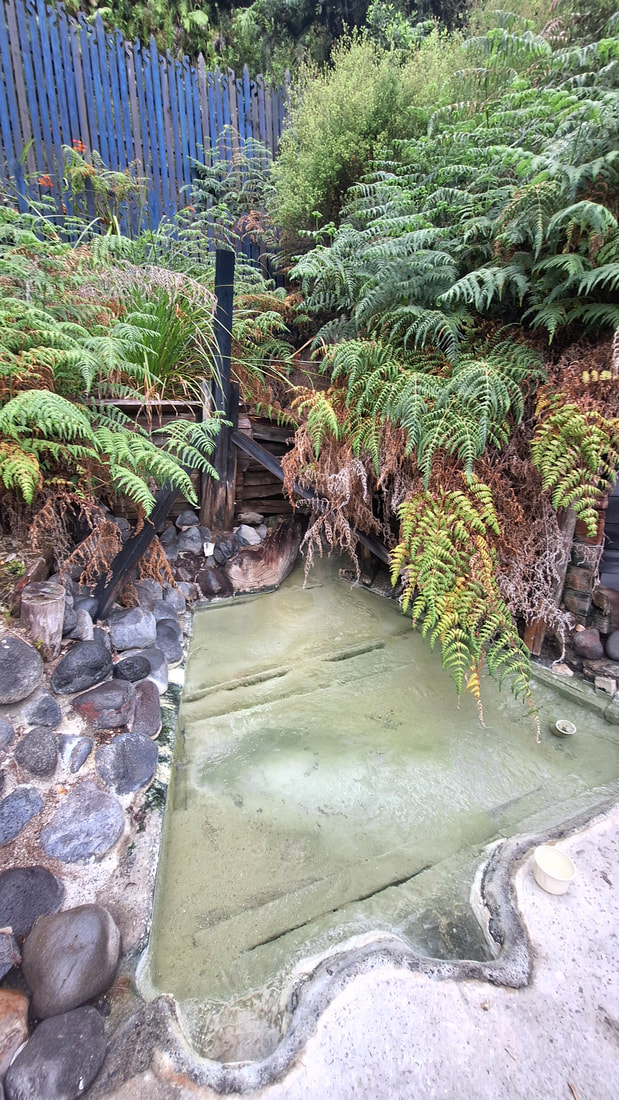|
We relaxed today. The film crew was working on the commercial. Tomorrow, we finish our 1000 mile trip from New Zealand to Tasmania.
0 Comments
Heading out across the Tasman Sea. This is the name for the part of the Pacific Ocean between New Zealand and Australia.
Relaxing through the day. A visit to the spa for Shawna and Betty. Walking the deck. Tonight "Strings Alive" which is a couple who play violin, piano, and guitar. Very good.
Later, Shawna and I went to the Billboard onboard where two pianist play dueling pianos. They were fantastic every time we heard them play and sing.
As we headed out of port, the seas were rough but it got much worse the next morning. Good thing for us, we are somewhat immune to sea sickness. Throughout the day, we found most of the eating locations were not busy. I wonder why? Breakfast in the dining room was nice. The view of the coastline was amazing. The crashing waves must have been 50 feet tall. The crew for the Holland America commercial are at work again today. As I walked the ship, the makeup and costumes were outside the Rolling Stone Lounge. We pass between the large island of NZ and Stewart Island which is the most southern island but small. This will be our most southern point on the cruise and our closest point to Antarctica. Other than the southern tip of Chile, this is the closest of any other country in the world to the south pole. Shawna and Betty decided to go to the spa to relax. The captain came over the PA and said that we will be moving out of the protective area between and into rougher seas crossing to Tasmania. We will see what that means later today.
Our evening show on the Main Stage was great and so was the music at the Rolling Stone Lounge.
We visited a rainy Dunedin and Port Chalmers for an excursion to Larnach Castle.
The city was founded by the Scottish Free Church in 1848. Amazing how much this area and its weather is like Scotland.
Grabbing our raincoats, we headed off to the bus for our tour. The bus driver was very funny and informative about the area and its history.
We made a short stop at the train station. It is very old and ornate. From the outside, it looks like a castle or mansion.
The floor was of very small tiles and very detailed.
We drove down from the port and through the city then beyond and up to the castle.
The castle was a very interesting building. Lots of history and we did enjoy our tour.
As the tour started, we got a detailed history of the construction and some of the family that owned the home.
The castle is very ornate with many carvings on walls, ceilings, and many doors.
Throughout there was woodworks and furniture that was very impressive.
The climb up to the top of the tower was very narrow so I did that on my own.
The grounds were impressive.
At the end of the tour, we stopped into the café to get something. They normally serve coffee and tea on chinaware. We did not have enough time since our bus was leaving soon. Shawna had to order "take away" for them to understand she wanted disposable cups. There are some differences in how you order food in some countries.
The garden around the castle had some very nice flowers.
Back through the city and back to port. It rained almost the entire day and only started to clear up as we pulled out of port.
The wind really kicked up and the pilot looked to be struggling to keep the ship in the tight channel through the bay. It twisted and turned with little room on either side for error.
Our last view of the area was a Royal Albatross colony just at the exit to the channel.
Sadly, the captain came over the PA and said that we would not be able to enter the Fjords and see those as planned. A low pressure system has made winds and high waves too dangerous for us to visit them. As a result, we are heading for extra sea days and some rough seas.
Well, we have a film crew on board working on a commercial for Holland America. They have several actors some of which are children and at least as many in the production crew. It was interesting watching them go through the process of getting the shots for the commercial.
Tonight, Shawna and I went to the Billboard Onboard (dueling piano bar). They were FANTASTIC. It was All Requests and the audience really put them to the challenge of dozens of songs to sing.
A great end to the day.
Today, we did not have any excursions. We relaxed and played some cards.
Later, Shawna and I walked out of the port to the nearby beach.
This beach is known for the little blue penguins that come on shore every night. During the day they are out in the ocean but each night they come in to rest and are gone again at dawn.
Our ship is only here from 8am to 5pm so we will miss seeing them.
The beach is only a short walk from the ship.
We walked out to the waves and each time one would come in the water looked like split pea soup.
Well, that is green sand. No doubt about it. The sand is super fine. Almost a powder but very, very green.
Shawna got a few pretty shells and we found several huge sand dollars. Most were alive or newly dead so none could come with us. One because it would stink and two because there are pretty serious fines for bringing ANYTHIING that has recently been alive to Australia where we leave the ship in a week.
These are the shells we decided we could bring on the ship along with a couple of stones one of which floats. It is a time of lava that is so light and filled with air it will float.
We walked all the way from one end to the other of Caroline Bay Beach. There is even a small old light house on the cliff above the beach at one point.
It was an interesting walk but time to get back to the ship.
Tonight, the Pinnacle grill was doing a special menu from the Tamarind. The décor was changed to resemble the Tamarind restaurant on other Holland ships. It was very good food but spicy.
Our solo singer leaves tomorrow so we all went to her show. She is very good.
Getting late and we have an excursion tomorrow. It will be our last port in New Zealand.
Today, we rode a double decker bus on a tour. The beginning of the day was disappointing because it was socked in and a bit rainy. We left Littleton by tunnel through the mountain range that separated the Littleton from Christ Church. A straight shot of over one mile through to the other side. The port of Littleton is small but very busy.
As soon as we got through the tunnel, the weather started to improve. Our first stop was an overlook that is at the top of the mountain above the tunnel. We had some nice views of Christ Church and learned a lot of information about the communities.
There were quite a few flowering plants on the hillside.
The home of the people who owned the land before donating it to the city is now a coffee shop.
The city is in a valley of the largest area of flat ground in NZ. The surprise was when building started to be constructed the buildings sank. The area is actually an old swamp and very soft. There is little or any solid ground above the 60 foot mark below the surface. Today all buildings sit on large columns driving in at least that far down. Crazy! Otherwise, they are built up on the hillsides.
Very recently there was a terrible earthquake. They have earthquakes multiple times a day in NZ but large deadly quakes are rare. The most recent was in 2011 but only killed 1 person as the city is very prepared compared to most communities. In the past, large earthquakes would destroy or damage thousands of buildings.
It always surprises me what each country has as traffic and parking signs. No Cruising?
After an interesting drive through town, we stopped at a park/biological flowers… and took a short walk. It was very pretty with lots of varieties including a large rose garden. Right down town but still seeming to be far out in the country.
More tour of town and then we took a seaside road back to the ship. We passed several recognizable fast food restaurants. Some of the buildings were interesting and many had murals.
The highway back to the ship took us high above the bay.
Back at the ship.
Tonight, we had a performance by a magician on the mainstage. Steve Marshall was very good and funny. We had a good time.
Off to our next port. It is hard to not take the beautiful sunsets for granted when you have one almost every day.
We spend a day at sea. We will be relaxing today. Open sea in almost all directions. Some mountains far off to the west in the distance. Most of the day will be spent eating, relaxing, walking the ship for exercise. Tonight, there will be some entertainment. “Strings Alive” The theme was the 1970s at Billboard and “Get down on it” at Rolling Stone Lounge.
Tired by 11pm, we went on to bed.
Shawna was off to go on a river rafting trip. I had to bow out of the excursion because of my back problems which are much worse after the kayak trip. We will see what that means for me later. So Betty and I went on a bus tour of town.
Napier, NZ is a small city known for exporting wood, wine, and its 30’s style art deco buildings.
In 1931, an earthquake destroyed many buildings in the city when the land rose 10 feet. The construction after the dust settled was primarily art deco. Thousands of acres of land was also added to the area.
Betty and I took a scenic drive around town and a visit to the local Aquarium. The ride around town was “interesting”. This is a city of just over 65,000. Our bus driver/tour guide was very proud of his hometown. We rode all over where he pointed out the things he liked about the city. Lots of commentary about nice pubs, restaurants, shops and of course the Art Deco homes.
After an hour, we arrived at the Aquarium. There were nice displays which included the normal fish found in most waters of New Zealand but also some lizards and a few unusually animals.
The area of interest for us was the small penguins which were very active.
The next was the nocturnal kiwi display. Sadly, this was the best picture I got.
A large tank had many fish and several very large rays was near the end of the tour. The tank was large. Two divers were in the tank feeding the fish.
Back on the bus for us and to the ship. We hope that Shawna was having a good time on her excursion.
Shawna arrived back about 6pm. She enjoyed her rafting trip on the Mohaka River. They had some great rapids.
Today, Shawna and I go to kayak a lake, see glow worms in a cave, and take a dip in hot springs. It should be an interesting day. We drive quite a way through what looks like a tropical forest. We hopped on a bus for an hour drive across the country side. Something surprising is NO potholes, not one so far. Seems they know how to build a road. My grandfather used to say the secret of a good and long lasting road was the base. If that is not done correctly then the road would fail. It seems he was right because the road he worked on over 80 years ago is still great. Maybe, they have the same idea here. Still it is a bit strange to ride on the “wrong side” if the road. There is something interesting in NZ. They have a very tall “tree fern” . The fern can be 40 feet tall and if it were not for the top being obviously a fern it you would think they were palm trees. We arrived at lake Rotoiti and got ready after a short explanation of the days activities and how to kayak then everyone loaded up for the 1 hour paddle across the lake. The lake is interesting. It is actually a filled volcano. Yes, we are paddling in a caldera. It is still an active geothermal area. Not only are there hot springs along the shores in several areas but far more below the surface. Several times as we paddle along we smell sulfur and see bubbles pop up to the surface. Scientists do not believe the volcano will become dangerous just a source of some heat and a very popular hot spring. We were divided into two groups. One was off to the hot springs. The other, ours, headed off to see the glow worms. After we got back, I was surprised how few pictures I took. It was a long paddle and we were having to work at keeping up with our guide so maybe not that surprising. When we arrived at the cave, it was almost completely invisible from the lake. Only about 5 feet wide and tall. We paddled into the cave and toward the back. It was only about 30 feet deep in the hillside but there were lots of glow worms. They were easy to see with our eyes but the camera did not pick them up very well. Next, we headed to the hot springs. After about another half hour of paddling, we arrived at the springs. There were quite a few local people already there enjoying the springs. The springs are only accessible by boat. There is no access through the mountains on this side of the lake. This spring has been used by the Māori for hundreds of years and has been a commercial operation since 1914. The spring pumps out 7500 Liters or almost 2000 gallons of water per hour. The temperature is a steady 46 Celsius or 114 Fahrenheit. They are not shy to tout the health benefits of bathing in the hot springs. The water flows from fissures in the hillside about 40 feet up the hill. There are several 10 foot by 20 foot concrete pools where the hot water flows from one to the next. In all there are 6 pools. Each is slightly cooler than the one above. Of course, the smell of sulfur was very strong Below is the source spring. Wow, it was hot. There is a small cafe at the pools where we were given lunch. The tour supplied us with "Dads Pies”. Something like a chicken pot pie but with lots of choices of ingredients. Coffee and Hot tea were also supplied. We all wanted something warm to drink before our trip across the lake. The trip back was even colder than the trip over. It rained most of the way back. At times is was pouring down. So after an hour of paddling across the lake, we were soaked to the skin. Still a fun trip but I was so glad we had dry clothes waiting for us in the bus.
Back on the ship, we hurried to our cabin to shower and change for our first dressy night and have dinner with Mom. Last night was a bit rough for me. Lots of congestion. Had to sit up in bed to sleep.
We woke about 6am and then later off to breakfast. Nice as always. The hotel is popular with Asian students and others. We have seen several groups here during our stay. Last night and this morning was a group of school girls traveling together. Lots of giggles. I guess it is common world wide for 12 to 15 school girls to giggle during conversation. I don’t think I mentioned it before but window screens are not found anywhere in Auckland. That is right, the windows just open out to the outside. Bugs are a minimum if at all. More of a concern would be a small sparrow flying into your room to look for a snack. No mosquitoes just an occasional fly but those are rare. Shawna was checking our boarding passes and found we had been updated to a new time. Noon! So no waiting till 2pm and we can have lunch on board instead of finding a restaurant somewhere. The weather has been great the entire time we have been in Auckland. Well, that is supposed to change. Today, we have a high chance if rain. We check out about 11am and get a cab (not from last night's company) to the port to go through the embarkation process. Some places it is quick and some not so much. We will see what we have today. Finding our room. Lunch. Unpacking. Relaxing waiting for sail away. |
AuthorWe are a couple who have started on a new adventure... Archives
February 2024
Categories |











































 RSS Feed
RSS Feed